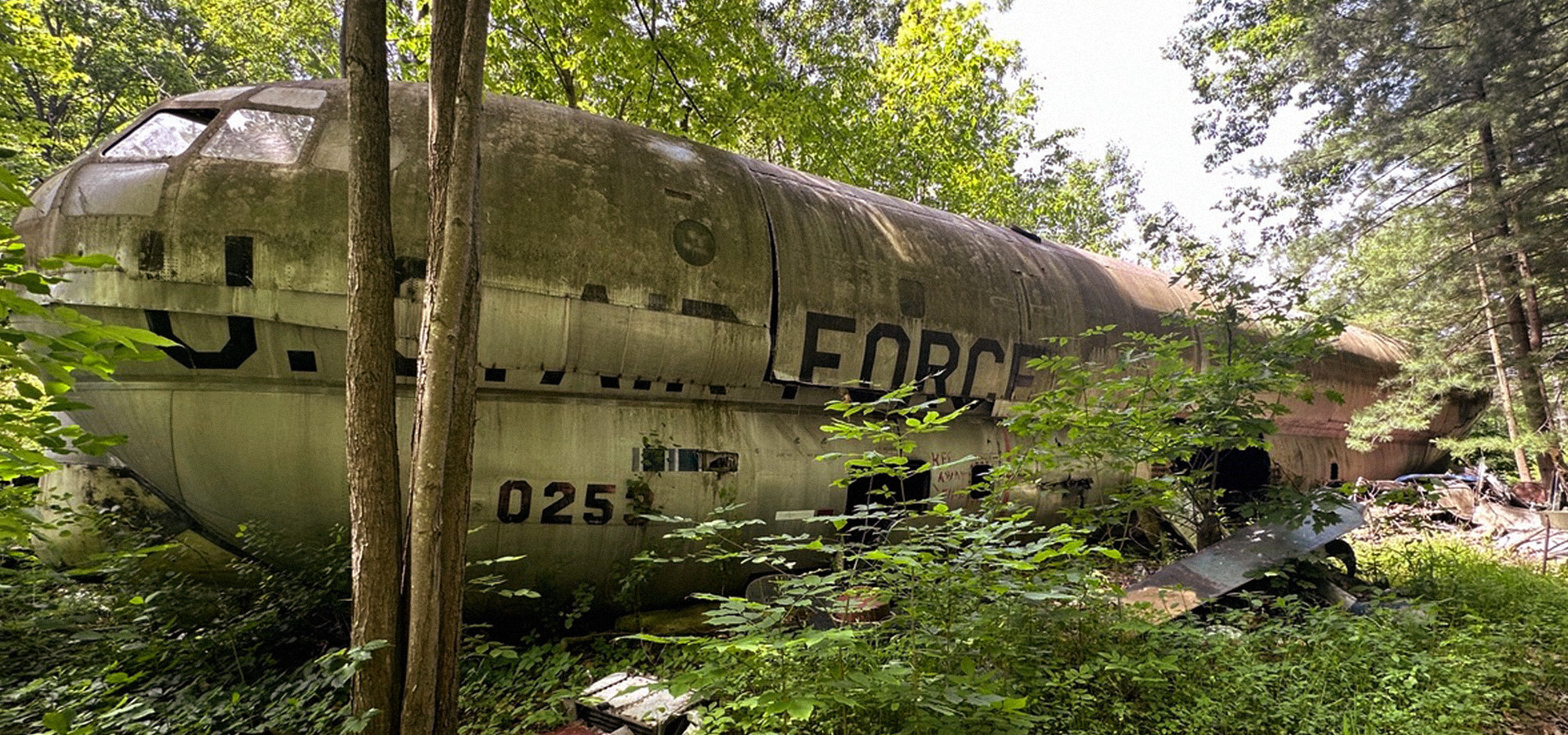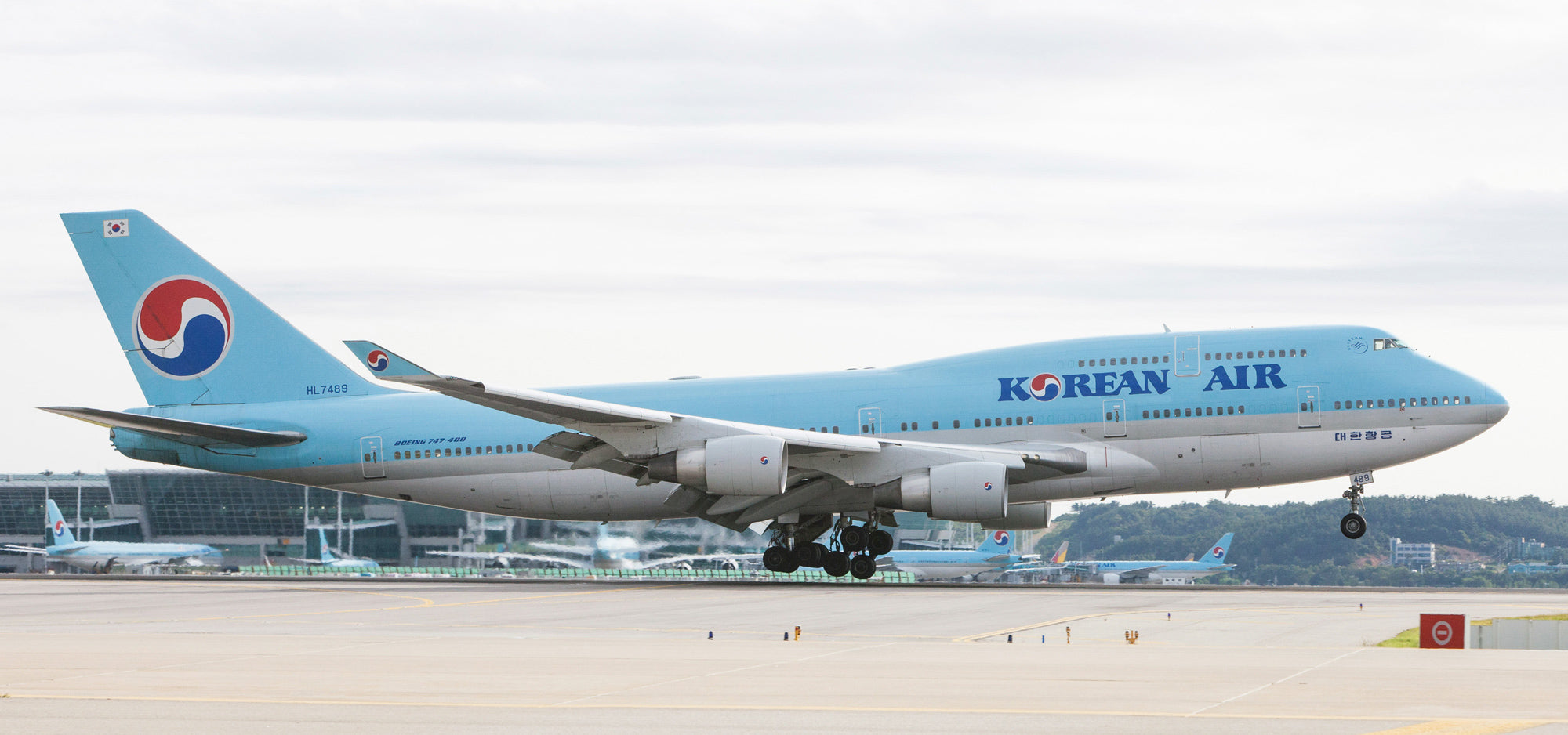The Douglas A20 Havoc, also known as DB-7 (Douglas Bomber) among other names, was a light bomber/attack aircraft used in every theater by nearly every Allied nation during WW2. Because of its superior handling during take off and landing, its ease of use with minimal instruction, and its reputation for being tough and dependable it was referred to as a “pilot’s airplane”. It’s no wonder then why SN 43-22197 was a personal plane of famed pilot and aviation pioneer Howard Hughes. And why MotoArt owner Dave Hall was so excited when he came across this plane. Own a A-20G Havoc WW2 aviation collectible.

A Havoc History
The A-20 Havoc was initially designed in 1936 as Model 7A, a two-crew attack-bomber, which the United States Army Air Corps hoped to replace its Curtiss A-12s and Northrop A-17s with.
Although the United States was still officially neutral when the plane was being designed and tested, wars were being fought in major nations across the globe. The IV Winter Olympic Games had just taken place in Germany but just months later Hitler broke the Treaty of Versailles by sending troops to the Rhineland. The Spanish Civil War and the Japan-China War were in full swing. Developing this plane was crucial to the USACC’s mission, and soon became critical to other nations as well.

Model 7B upped its capabilities with two 1,100 hp Pratt & Whitney R-1830C Twin Wasp engines and it could be built with two different nose configurations, as either an attack or bomber, with the latter having room in the nose for a bombardier and a bombsight instead of machine guns. It was submitted to a USAAC competition and then built as a prototype in 1939. It was a success from the start. In 1939, the French government ordered 100 DB-7s. After World War 2 began, the French, British (who called them the Boston) and other Allied nations ordered the plane. It was manufactured in several different variants.
“The takeoff run was from southwest to northwest that morning, and I can still clearly remember the pleasure and surprise of the experience. The plane seemed to accelerate down the runway at a must faster clip than the heavier B-25. The nose lifted quickly with just a little back-pressure on the wheel and she flew herself off at about 110 miles per hour just as smooth as could be. I yelled out an exuberant, “Hot dog!” as we climbed away from Morris Field. The controls responded to much lighter pressure than did the B-25. Everything in those first few minutes of flight felt just perfect. My later experiences with the A-20 under a variety of situations did not alter the first impression: it was a pilot’s plane and a joy to fly.” - Pilot Joseph W. Rutter, on his first A-20 Havoc flight, excerpt from “Wreaking Havoc: A Year in an A-20”
More A-20Gs were built than any of the other versions. It featured a heavier armor, four 20-mm cannons, one 0.50 caliber machine gun, a 0.30 caliber machine gun and held 2,000 lbs of bombs. 2,850 G series were built at the Douglas Santa Monica plant during the war.
A-20G Havoc Specs
- Crew: 3
- Length: 47 ft 111⁄7/8 in (14.63 m)
- Wingspan: 61 ft 4 in (18.69 m)
- Height: 17 ft 7 in (5.36 m)
- Wing area: 464 ft² (43.1 m²)
- Empty weight: 16693 lb (7708 kg)
- Loaded weight: 24127 lb (10964 kg)
- Maximum speed: 317 mph (276 kn, 510 km/h) at 10,700 ft (3,260 m)
- Cruise speed: 256 mph (223 kn, 412 km/h)
- Range: 945 mi (822 nmi, 1,521 km) (Combat range)
- Service ceiling: 23,700 ft (7,225 m)
- Climb to 10,000 ft (3,050 m): 8.8 min

Timeline of SN 43-22197
- C. 1944 - built at the Douglas Manufacturing Plant in Santa Monica, CA. Taken on Strength/Charge with the United States Army Air Force with s/n 43-22197. It did not see combat.
- 1950 - 1972 - owned by the Hughes Aircraft Co. in Culver City, CA, with the civil registration number N34920. It was retired and parked between 1963 and 1972.
- 1973 - 2018 - stored disassembled at Fox Field in Lancaster, CA and Ocotillo Wells, CA It is currently being restored.

A20 N34920 used by permission of Peter Garwood, taken at Fox Field 9.22.88
Howard Hughes: The Original AV Geek
Howard Hughes was known for being a businessman, as well as a film director, ladies man, philanthropist and more. But he is arguably the most well known as a record setting pilot and an influential aviation innovator. He formed the Hughes Aircraft Company in 1932 and spent the following two decades as a pioneer: building innovative aircraft and setting many world aviation records.

This plane was purchased by Hughes Aircraft Co. and was used by Hughes as a personal plane. For a time, it was painted in TWA’s colors, as Hughes controlled TWA from 1939 through the 1960s. Knowing the enthusiasm and innovation Howard Hughes’ personal planes imparted on the man, it can be surmised that the A20’s superior handling and joy to fly, among other aspects, appealed to Hughes as it did to the other Havoc pilots.
MotoArt Offers A Piece of the Pilot’s Airplane

MotoArt’s owner Dave Hall found out the Douglas A20 was being restored and there was material available to use from the original A20 airplane skin. “We were stoked to find this awesome plane,” said Hall. “There just aren’t many surviving Havocs around. And to find one that had been owned by Howard Hughes makes it even more exciting.” Hall had the retired airplane skin and parts brought back to the MotoArt Studios in Torrance, CA. Since the beginning in 2015, each PlaneTag has been handmade in the United States.
Howard Hughes Aviation Collectible

Each Douglas A20 Havoc PlaneTag is hand-crafted right in Torrance, CA. The colors vary but each is hand crafted directly from the airplane skin removed during the restoration of the A20. They come with a tough metal loop and are attached to a collectible card with the plane’s information and silhouette. Like all PlaneTags, the back can be personalized. They make great keychains and custom luggage tags that are sure to draw interest when you travel. They are fun to collect or even give to your favorite avgeek or pilot. Carry a small piece of history and the personal airplane of a true aviation pioneer.






Share:
MotoArt's Functional Art: MD-80 Fuselage Bar and DC-8 Cowling Desks
Flying High In A DC-6